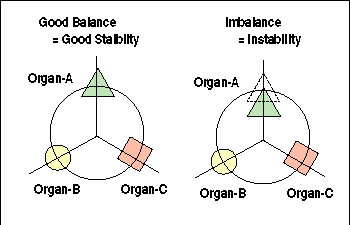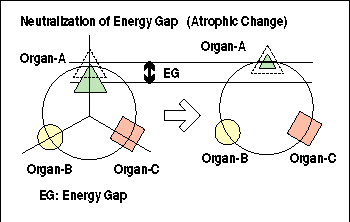|
3. Instability of A Human Body and Energy Gap
Importantly, a human body decreases the stability when it causes "Energy Gap" among the organs. A human body maintains the life on the basis of the stability, which originates in the balance among the organs. Thus, in a human body, when one of the organs changes the momentum and causes the imbalance in momentum with the background organs, it also causes "Energy Gap." Then, because of this energy gap," the human body decreases the stability. In short, when a human body causes "Energy Gap," it decreases the stability.

4. Neutralization of Energy Gap
A human body causing an energy gap aggressively neutralizes the energy gap to regain the good stability. A human body with an energy gap, as explained above, decreases the stability, so that it should regain the good stability to maintain the life. By this mechanism, a human body causing an energy gap aggressively always tires to neutralize the energy gap.
Importantly, a human body often causes disease to neutralize "Energy Gap." Imagine, for instance, an organ reducing the momentum. In this condition, the organ has caused the relative difference in energy density with the background organs, and which works as an energy gap. Then, to neutralize this energy gap, the organ becomes atrophied. Importantly, just this phenomenon teaches us how an organ with chronic inflammation causes atrophic change.

|